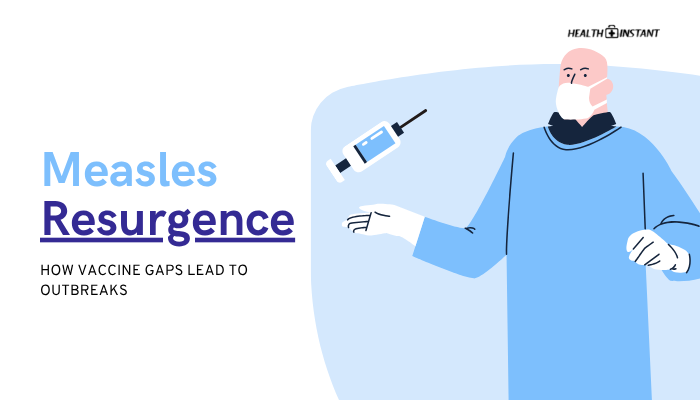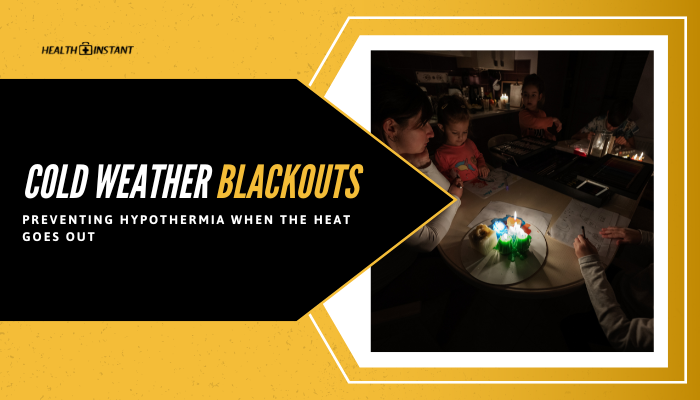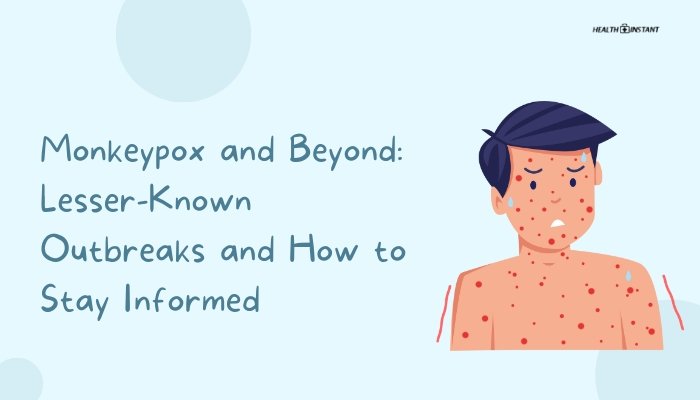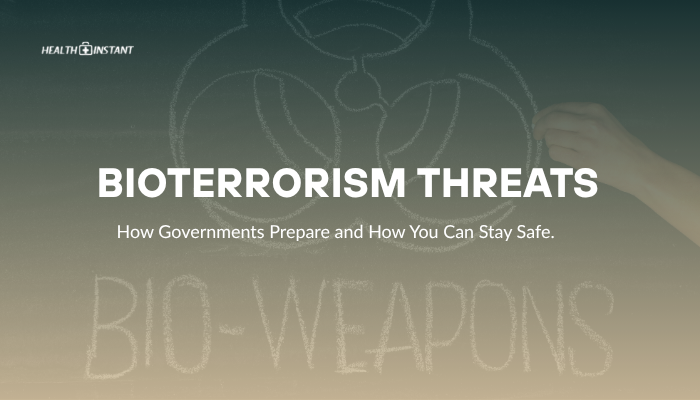Introduction
For decades, countries around the world celebrated major strides in lowering measles cases through widespread immunization. Progress in the late 20th century made measles seem like a disease of the past.
Yet, recent years have seen a worrying trend: measles outbreaks in areas previously close to eliminating it entirely. Regions as diverse as Europe, the United States, the Middle East, and Africa have all struggled with new clusters of infection. The reasons are complex but often center around vaccine gaps.
Measles remains a top cause of preventable childhood death globally. It poses severe risks of complications such as pneumonia or encephalitis, especially in children under five. While cost-effective vaccines exist, pockets of under-immunization undermine global control efforts.
Misinformation, logistical hurdles, and conflict zones all contribute to dangerously low vaccination rates in some areas. Travel swiftly transports measles from these hotspots to places that once recorded near-zero cases.
The story of measles highlights the fragility of success in infectious disease control. Even diseases we believe nearly conquered can resurge if the conditions allow. This article examines why measles roared back after years of steady progress, how vaccine coverage forms the first line of defense, and the steps communities and health agencies can take to reduce new outbreaks.
By understanding the causes of the current measles resurgence, we are better positioned to protect children worldwide from a disease that no longer needs to claim young lives.
What Is Measles?
Measles is a highly contagious viral infection caused by the measles virus (a paramyxovirus). Also known as rubeola, measles primarily spreads through airborne droplets. When an infected individual coughs or sneezes, they release tiny particles carrying the virus. These particles can remain infectious in the air or on surfaces for hours.
Key characteristics include:
- Host: Humans are the only known natural host for the measles virus.
- Symptoms: Early signs are high fever, cough, runny nose, and conjunctivitis (red eyes). Later, a characteristic rash starts on the face and spreads downward.
- Complications: Ear infections, pneumonia, encephalitis, and in severe cases, death.
For centuries, measles was a near-universal childhood illness with high mortality, particularly in malnourished or immunocompromised kids. The advent of modern vaccines significantly lowered disease burden, transforming measles from a near-inevitable scourge into a preventable illness.
History and Near-Elimination
Historically, measles infection was so prevalent that nearly every child contracted it by age 15 in the absence of vaccination. Outbreaks routinely swept through communities, leaving behind immunity for survivors but often claiming many lives. With the introduction of the first measles vaccine in the 1960s, incidence dropped rapidly in countries that implemented mass immunization.
The World Health Organization (WHO) targeted measles as a high-priority disease for control and potential elimination. By the early 2000s, large-scale vaccination campaigns curbed measles drastically in many regions:
- Americas: Achieved interruption of endemic measles transmission by 2002.
- Western Pacific Region: Countries like Australia and Japan also pushed measles incidence to historic lows.
These successes fueled optimism that global eradication of measles, similar to smallpox, was achievable. However, the global campaign faced hurdles, and total eradication remained elusive.
Why Measles Is So Contagious
Measles stands among the most contagious diseases known, with a basic reproduction number (R0) ranging from 12 to 18. This means a single infected person can transmit the virus to 12–18 susceptible individuals in a non-immune population. Several factors account for this:
- Aerosol Transmission
Small droplets can linger and infect people who enter a room up to two hours after an infected person has left. - Virus Survivability in Air
Measles virus remains viable in the air or on surfaces longer than many other respiratory pathogens. - High Infectivity Early
Infected individuals spread measles up to four days before the rash appears, when they might not realize they are contagious. - Lack of Cross-Species Hosts
With humans as the only reservoir, if local vaccination coverage is incomplete, new infections can explode through the unvaccinated population.
Once measles enters a susceptible cluster, it can cause nearly universal infection in that group. This explosive potential underscores the critical need for high vaccine coverage to keep measles out.
Signs, Symptoms, and Complications
A typical measles infection unfolds in stages:
- Incubation: About 10–12 days with no visible symptoms.
- Prodrome Stage: High fever, runny nose, cough, and red eyes for 2–4 days. Tiny white spots (Koplik’s spots) may appear on the inside of the mouth.
- Rash Stage: A red, blotchy rash starts at the hairline, then progresses down the body. The rash lasts around a week.
Most people recover within 2–3 weeks. However, some develop serious complications:
- Pneumonia: The most common cause of measles-related death.
- Ear Infections: Potential hearing loss if untreated.
- Encephalitis: Swelling of the brain, leading to seizures or permanent brain damage.
- Subacute Sclerosing Panencephalitis (SSPE): A rare but fatal degenerative disease of the central nervous system, occurring years after measles infection.
Children under five and adults over 20 face higher complication risks. Malnutrition and vitamin A deficiency exacerbate measles severity. Prompt supportive care—hydration, vitamin A supplementation, and treating complications—improves outcomes.
The Role of Vaccines in Controlling Measles
Vaccines form the cornerstone of measles prevention. Two main types exist:
- Monovalent Measles Vaccine: Targets measles alone.
- MMR Vaccine (Measles, Mumps, Rubella) or MMRV (Measles, Mumps, Rubella, Varicella): Combined vaccines that protect against multiple diseases in a single shot.
Vaccination schedules typically include two doses:
- First Dose: Administered around 9–12 months (varies by country).
- Second Dose: Given later (often between 15–24 months) to boost immunity.
Two-dose coverage of 95% or more is ideal for herd immunity. In a population with such coverage, measles struggles to find a susceptible host to sustain transmission. Even if an infected traveler introduces the virus, outbreaks remain minimal or nonexistent.
Benefits of these vaccines:
- Long-Term Immunity: After both doses, protective antibody levels often last decades.
- Safe and Cost-Effective: Despite rumors about side effects or links to autism, extensive research confirms the MMR vaccine’s safety.
- Broader Health Gains: Reducing measles also prevents numerous hospital stays, meaning health systems can allocate resources for other priorities.
Causes of Measles Resurgence
Vaccine Hesitancy
In some high-income countries, small but vocal groups question vaccine safety. Misinformation circulates online, sowing doubt about MMR. Even though no credible evidence supports a link between vaccines and autism, public fear can lead to vaccine refusal or delay. As more parents skip or postpone vaccinations, clusters of susceptible children form, setting the stage for outbreaks.
Access and Healthcare Inequities
Certain regions lack robust healthcare infrastructure or stable vaccine supplies. Rural communities, remote villages, or conflict-affected populations may not receive routine immunizations. Economic constraints, poor transport, or limited cold chain capacity hamper vaccine delivery. Over time, these areas develop a large pool of unprotected children who fuel measles reintroduction when travelers or returning refugees bring the virus.
Conflict and Displacement
War zones or conflict-affected areas frequently see healthcare facilities destroyed or deserted. Families on the move might miss scheduled doses. Refugee camps, with overcrowded conditions and uncertain sanitation, become perfect hotspots for measles transmission if immunizations are disrupted.
Global Travel and Migration
Measles can cross borders rapidly. Individuals incubating measles may not realize they are infected while flying to new destinations. Outbreaks can start from a single imported case, especially if local immunization coverage is below herd immunity thresholds. Tourist destinations, major airports, or large gatherings (e.g., religious festivals) can accelerate spread.
Recent Outbreak Examples
- United States (2019): Large measles outbreaks in communities with low vaccination rates, such as certain religious or cultural groups in New York. Travel-related infections introduced measles to these unvaccinated pockets, leading to hundreds of cases.
- Europe (2017–2019): The European region reported tens of thousands of measles cases. Countries like Ukraine, Romania, France, and Italy struggled with coverage dips. Urban centers saw surges as parents refused or delayed vaccinations due to misinformation.
- Democratic Republic of the Congo (2019–2020): One of the worst global measles outbreaks in decades, with thousands of child deaths. Widespread conflict, malnutrition, and an overstretched health system contributed to poor vaccine coverage.
- Southeast Asia: Nations including the Philippines saw measles flare-ups after partial disruptions in immunization campaigns and public mistrust following controversies related to other vaccines.
All these examples underscore that no region is immune if immunization falters, whether due to misinformation, healthcare breakdown, or both.
Herd Immunity and the Danger of Declining Coverage
“Herd immunity” arises when enough people in a community are immune (through vaccines or prior infection) to block effective virus transmission. For measles, around 95% population coverage is recommended to sustain herd immunity. Even a small decline—say, from 95% to 85%—can allow measles to spread quickly among susceptible individuals.
Why is coverage so critical?
- Disease Infectivity: Because measles is so contagious, a mild coverage gap can cause major outbreaks.
- Local Clustering: If unvaccinated individuals cluster in schools, neighborhoods, or social networks, the virus finds it easy to propagate among them.
- Impact on Vulnerable Populations: Infants too young for vaccines, immunocompromised individuals, or the elderly rely on others’ immunity. Gaps put these high-risk groups in jeopardy.
Maintaining or improving coverage demands consistent investment in public health campaigns, strong political commitment, and robust supply chains for vaccines.
Public Health Measures to Stop Outbreaks
Routine Childhood Immunization
Strengthening routine immunization ensures each child receives measles-containing vaccines (MMR or MMRV) at recommended ages. Proper recordkeeping and follow-up for second doses reduce the risk of missed children. In places with suboptimal coverage, bridging strategies might include mobile clinics, educational drives, or integrating measles vaccines with other childhood shots (like polio or DTP).
Supplementary Immunization Activities
During or before outbreaks, authorities often launch “catch-up” campaigns. These door-to-door or community-based efforts target all children within specific ages, regardless of prior vaccination status. Mass campaigns effectively raise population immunity, though they require significant manpower, resources, and planning.
Rapid Detection and Contact Tracing
Surveillance that captures every suspected measles case allows health teams to quickly verify outbreaks. Once confirmed, contact tracing identifies and vaccinates or monitors individuals exposed. Quick isolation of confirmed cases in medical settings can reduce spread. Health agencies also collect and analyze data to see if further local measures, like restricting gatherings or intensifying public messaging, are needed.
Community Engagement and Education
Public trust is central to a successful measles response. Engaging religious or tribal leaders, teachers, and parents fosters better acceptance. Clear, consistent messaging counters misinformation:
- Explaining Vaccine Benefits: Why the MMR vaccine is safe and vital.
- Addressing Common Fears: Disproving myths about vaccine-autism links or harmful ingredients.
- Promoting Social Responsibility: Stressing that each vaccinated child protects the community’s vulnerable members.
Policy and Legislation
Some countries have adopted stricter policies linking school entry to proof of vaccination. Others rely on “soft mandates,” offering child benefits or tax incentives to ensure timely immunization. Legislation can be controversial but often helps raise coverage when used alongside respectful community communication. Ultimately, strong political will to prioritize health budgets for vaccine procurement and distribution is vital to preventing recurrent outbreaks.
Challenges and Persistent Myths
Measles elimination faces persistent obstacles:
- Vaccine Refusal
Certain groups hold firm anti-vaccine beliefs or see immunization as an outside imposition. Historical mistrust of government or healthcare can magnify these views. - Misinformation
Social media frequently spreads flawed claims, such as that MMR leads to autism or fertility issues. Confronting these rumors requires ongoing, evidence-based communication. - Logistical and Financial Gaps
Some developing countries battle a lack of trained staff, poor road networks, or limited cold-chain facilities. Maintaining consistent vaccine availability and safe storage is complex and costly. - Humanitarian Crises
Refugee populations escaping war or disasters often converge in camps with subpar sanitation and no formal healthcare. Measles can rip through such communities in weeks if unvaccinated. - Global Priorities
The COVID-19 pandemic, for instance, drew resources away from routine immunizations in some regions. Lockdowns or clinic closures meant missed measles shots for many children.
Yet, these hurdles can be tackled. Multilateral agencies, philanthropic groups, and local organizations frequently unite to finance immunization drives, build supply chains, and train frontline workers. Clearing up misconceptions calls for culturally informed campaigns that address personal and communal concerns. Each success fosters further confidence, stifling the potential for measles to re-establish a foothold.
Long-Term Strategies and Future Outlook
Despite setbacks, the long-term outlook on measles remains hopeful:
- Integrated Health Approaches: Combining measles vaccination with other health interventions (vitamin A supplementation, deworming tablets) can draw more families to clinics and unify resources.
- Technological Advancements: Innovators explore improved vaccine delivery methods—like micro-needle patches or thermostable formulations—that reduce cold-chain needs.
- Surveillance Modernization: Digital data collection and better lab networks speed outbreak detection. Real-time dashboards help policymakers allocate vaccines quickly.
- Global Commitment: With Gavi, the Vaccine Alliance, the WHO, and UNICEF continuing to fund measles programs, impetus remains to push coverage higher, even in remote or conflict-torn zones.
However, total eradication (like smallpox) demands a near-constant 95% coverage globally. Achieving that threshold consistently across every country, region, city, and rural village remains a daunting challenge. If progress stalls, measles can reappear wherever coverage slips. The path forward thus depends on unwavering political will, local leadership, and scientific dedication to refining vaccines and strategies.
How Individuals Can Help
No matter one’s location, personal actions contribute to measles prevention:
- Vaccinate Yourself and Family
- Ensure children receive MMR shots as recommended. Adults uncertain of their vaccination status might consider booster doses, particularly if traveling to outbreak areas.
- Ensure children receive MMR shots as recommended. Adults uncertain of their vaccination status might consider booster doses, particularly if traveling to outbreak areas.
- Stay Informed
- Rely on reputable health sources like the WHO or CDC for accurate updates on outbreaks and recommended preventive steps.
- Rely on reputable health sources like the WHO or CDC for accurate updates on outbreaks and recommended preventive steps.
- Combat Misinformation
- Politely share evidence-based facts when confronted with vaccine myths.
- Encourage open dialogue in parent groups, schools, or religious communities.
- Politely share evidence-based facts when confronted with vaccine myths.
- Volunteer or Donate
- Organizations like Rotary International or UNICEF accept funds, supplies, or volunteer time for immunization drives.
- Even small efforts in local communities—like hosting Q&A sessions with pediatricians—improve acceptance.
- Organizations like Rotary International or UNICEF accept funds, supplies, or volunteer time for immunization drives.
- Travel Responsibly
- If visiting areas with measles circulation, verify your measles immunity.
- Practice good hygiene and remain alert to any local health advisories.
- If visiting areas with measles circulation, verify your measles immunity.
Conclusion
Measles is more than a trivial childhood infection. It is a highly contagious, vaccine-preventable disease that can cause dire consequences. The global near-elimination of measles was a public health triumph, proving that consistent, high coverage can almost halt a disease.
Yet, the recent resurgence acts as a warning: we cannot ease up or allow immunization rates to slip. Vaccine gaps—whether driven by misinformation, weak health infrastructure, or crises—provide measles with new openings.
To stave off further outbreaks, communities and nations must fortify routine immunization, respond swiftly to suspected cases, and debunk persistent myths. Programs that integrate measles vaccine delivery with broader health services can extend immunization to the most remote corners.
Sustained investment by governments and international organizations is essential to maintain progress. On an individual level, each family’s decision to vaccinate fosters herd immunity that protects the entire neighborhood, especially those too young or medically unable to get vaccinated.
Measles’s comeback story underscores how infectious diseases remain a persistent threat unless systematically contained. By uniting science, policy, and grassroots cooperation, we can drive measles back toward elimination and ensure fewer children worldwide face the burden of this preventable illness.
References
- World Health Organization (WHO). (2022). Measles fact sheets.
- Centers for Disease Control and Prevention (CDC). (2021). Measles (Rubeola).
- Gavi, the Vaccine Alliance. (2020). Measles: the facts.
- Duclos P, Okwo-Bele JM, Gacic-Dobo M. (2009). Global immunization coverage: sustaining gains, averting slippage. Vaccine. 27(43): 5848–5853.
- Strebel P, Cochi S, Hoekstra E, et al. (2003). A world without measles. J Infect Dis. 187(Suppl 1):S1–3.
- Orenstein WA, Perry RT, Halsey NA. (2004). The clinical significance of measles: a review. J Infect Dis. 189(Suppl 1):S4–16.
- Durrheim DN, Andrus JK, Tabassum S. (2014). A dangerous measles future looms beyond the horizon. Lancet. 383(9930):411–412.
- World Health Organization. (2018). Responding to measles outbreaks in measles mortality reduction settings.
- Papania MJ, Orenstein WA. (2017). Defining and reducing measles mortality. J Infect Dis. 216(suppl_1):S35–S45.
- UNICEF. (2022). Measles and rubella strategic framework 2021-2030.
- Patel MK, Antoni S, Nedelec Y, et al. (2020). The changing epidemiology of measles: using lessons and data to inform global response strategies. J Infect Dis. 221(Suppl 4):S291–S295.
- Lo NC, Hotez PJ. (2017). Public health solutions to vaccine hesitancy. BMC Public Health. 17(1):424.
Disclaimer: The content of this article is for informational purposes only. Always consult healthcare professionals or local authorities for medical advice and official updates regarding immunization schedules and outbreak responses.





